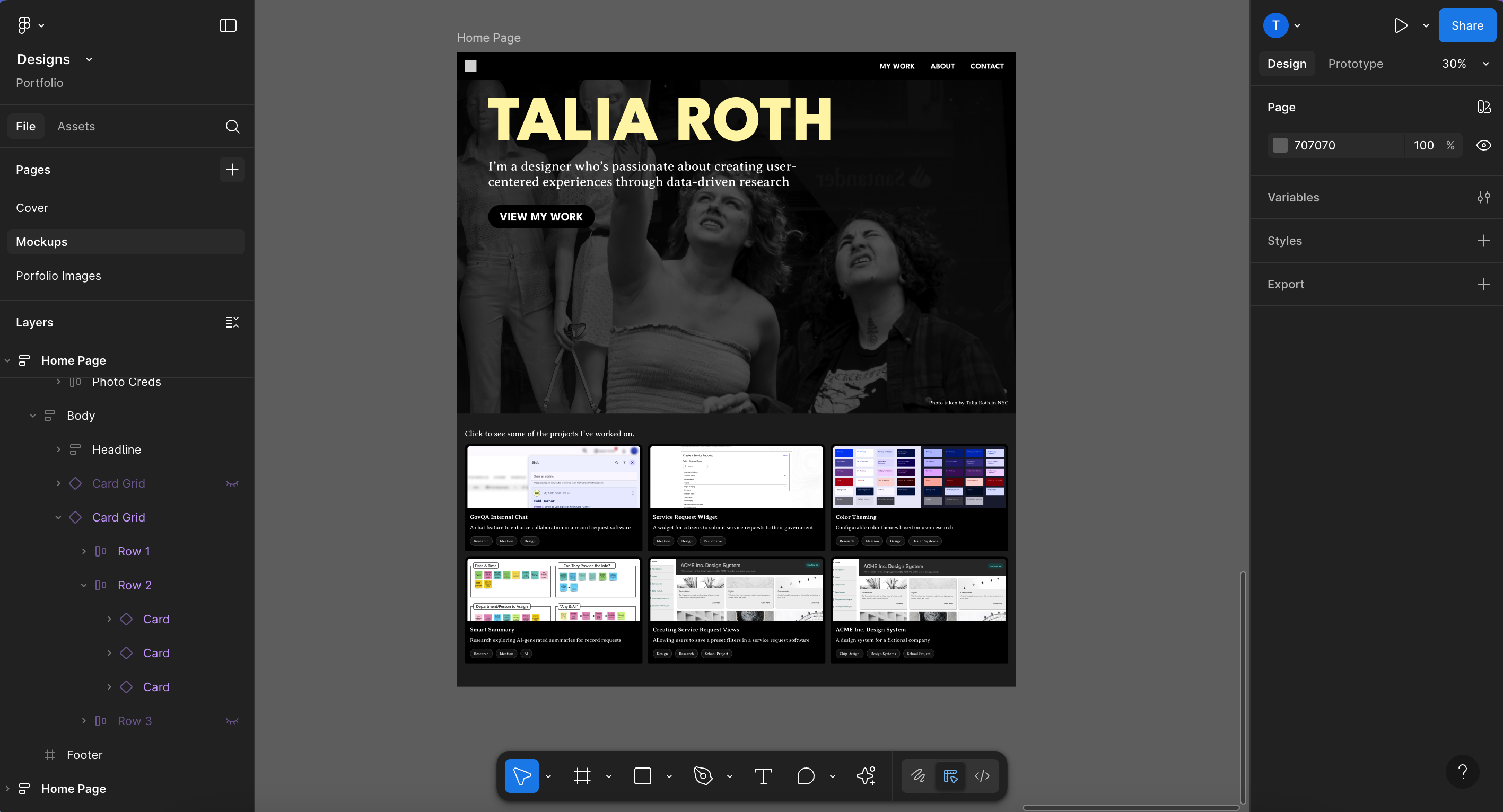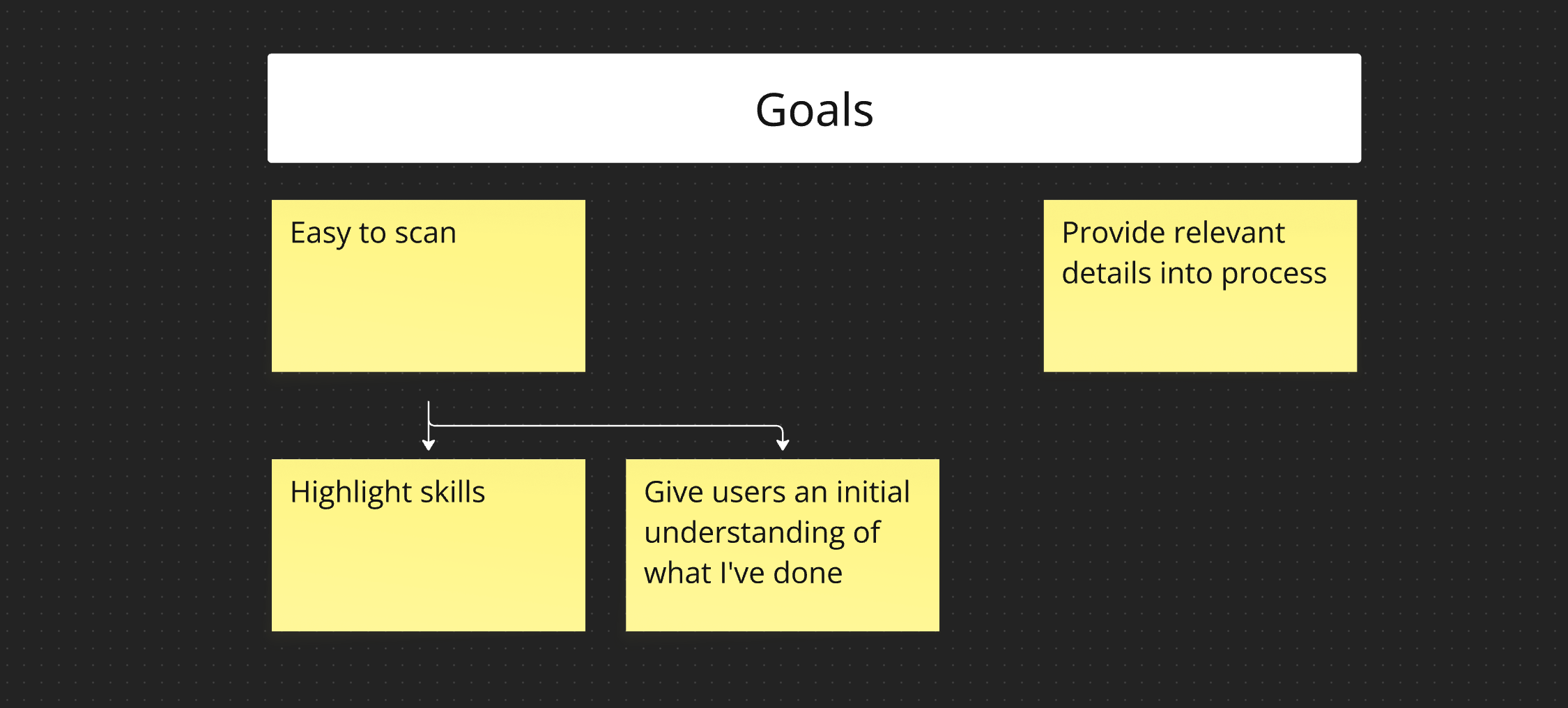



I designed and built my portfolio site through Figma and Claude, an AI tool. I used it to generate and refine code based on my mockups while ensuring the user experience matched my vision.
GITHUB REPOSITORY
I partnered with Claude AI to design and develop a fully customized portfolio that maintains both creative freedom and ease of updates while ensuring it's intuitive and easily scannable.
UX Designer & Developer
5 weeks (April 2025 - May 2025)
Figma, Claude AI, HTML/CSS/JavaScript
Design mockups, responsive website, password protection system, project templates
As a UX designer, I needed a portfolio that would effectively showcase my work while being easy to maintain and update. Traditional portfolio solutions created a frustrating dilemma between convenience and creative control, leaving me unable to achieve the user experience I envisioned.
Portfolio platforms like Squarespace and Webflow offered templates but restricted my ability to create the exact user experience I wanted
Building from scratch is time-consuming and limits my ability to iterate quickly
Custom-built portfolios often become difficult to maintain over time, especially when adding new projects or making design updates
Many of my projects contain sensitive client information that needed to be selectively protected while still allowing portfolio viewing
I began this project with a clear design principle in mind: creating a portfolio that would be easily scannable while still providing meaningful depth for those who wanted to dive deeper into my work and process.
My primary objective was scannability. I wanted visitors to quickly understand three key things about my work: what types of projects I've tackled, what skills I brought to each project, and for those willing to invest more time, a clear view of my design process.

I analyzed what makes content easily scannable in my own browsing behavior. This led me to incorporate specific design patterns: skill chips for quick skill identification and structured project cards that provide just enough context to spark interest while maintaining visual consistency.
I started designing the overall aesthetic in Figma, focusing on creating a clean, professional look that would support the scannability goal. However, as I progressed through the design phase, I became overwhelmed by the prospect of hand-coding and maintaining a custom site.
While researching alternatives to traditional portfolio platforms, I discovered that Claude AI excelled at generating clean, semantic code from design mockups. Given my existing HTML/CSS/JavaScript knowledge, this seemed like the perfect middle ground between platform limitations and coding complexity.
Working effectively with Claude required more than just asking for code—it demanded strategic communication to ensure we shared the same vision and goals. I developed a systematic approach to prompting that consistently produced results aligned with my design intentions.
Every interaction began with clear context-setting. I established that I was building a UX portfolio specifically designed to be easily scannable for hiring managers, recruiters, and industry professionals. This framing helped Claude understand not just what I was building, but who would be using it and how.
I made styling consistency a explicit requirement in my prompts, referencing existing design elements and asking Claude to maintain visual harmony across all pages. This proactive approach prevented style drift and reduced the need for extensive revisions.
Always established the project type (UX portfolio) and target audience (hiring managers, recruiters) to align Claude's approach with user needs.
The solution delivered a fully customized portfolio that balanced creative control with practical efficiency. By partnering with Claude AI, I achieved the best of both worlds: complete design freedom without the traditional time and maintenance overhead of custom development.
This project fundamentally shifted my perspective on the relationship between design and development. By partnering with AI, I discovered a new way to bridge the gap between creative vision and technical execution, opening up possibilities I hadn't considered before.
Needed to develop new review processes to ensure AI-generated code met accessibility and performance standards
Learning when to provide specific direction versus when to let Claude make implementation decisions required careful calibration
Discovered that AI can be an effective design partner when used strategically, not just a coding assistant
Realized that clear communication with AI tools is becoming an essential skill for designers working with emerging technologies
Created a long-term approach to portfolio maintenance that grows with my career without increasing complexity or costs
Experiment with newer AI models to compare code quality and efficiency
Continue maintainging and added to my portfolio
Stay up-to-date with artificial intelligence and continue to learn new skills